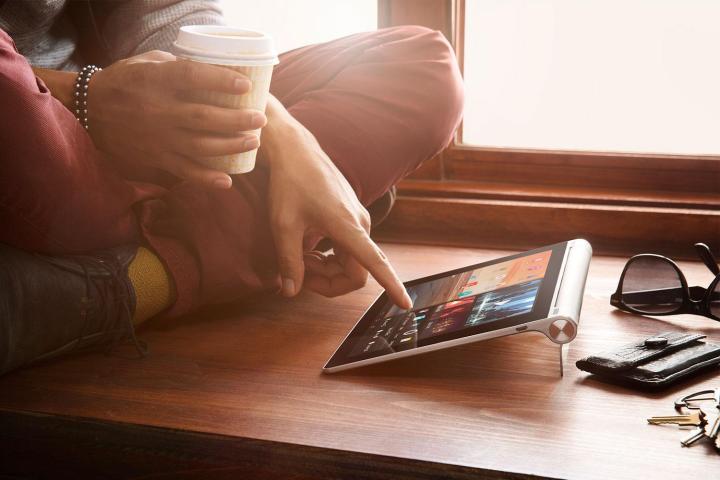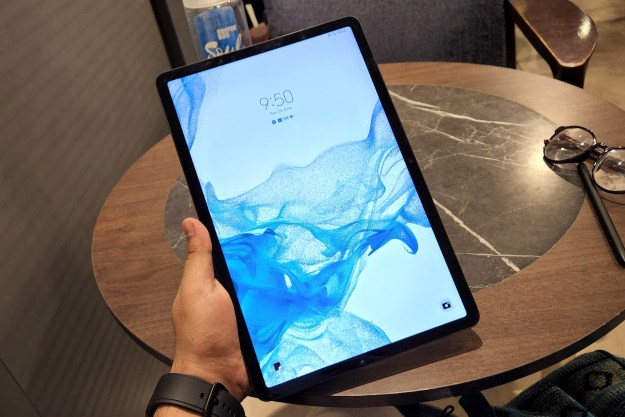
Related: Our picks for the best tablets and all of our tablet reviews
Step 1: Figure out what your needs are
What do you need to do on this tablet? Are you hoping to watch movies? Store it in your purse? Type documents? Read articles? Use photoshop? Does it need a keyboard? A stylus? A Webcam? Much like smartphones and
Step 2: Choose an operating system
Android and iOS (iPad) have dominated the tablet scene in recent years, but the Windows tablet category is growing. There are also some good tablets offered by Amazon and a few others that run heavily modified versions of


iOS: The iPad runs on iOS. The iPad has more than 725,000 apps custom built for it and is currently the market leader in every way. It is still the tablet to beat in terms of quality and it has the most impressive selection of apps and accessories. If you own other Apple devices, or enjoy services like iTunes, the iPad may be a good option for you. If you don’t, well, it may still be the best option for you. The user interface is accessible and very slick, but it doesn’t allow for much in the way of customization.
Comparatively, the iPad and iOS apps are more expensive than

Windows: Windows tablets come closest to offering a traditional computing experience, like you might find on a PC or laptop. You’ll be able to run full versions of software like Microsoft Office on a Windows tablet, so it may be the best choice if you plan on using your tablet for work. There are also more than 200,000 apps in the Windows Store, designed to be touch-friendly. Windows offers support for multiple user accounts, and boasts a robust set of parental controls.
As a touchscreen tablet experience, Windows is still significantly weaker than

Others: A few years back there were more competitors in this space, but the BlackBerry Playbook flopped, and Barnes & Noble has stopped making Nook tablets. You may still be able to pick up both on the cheap, but we wouldn’t recommend it. That leaves Amazon with its Kindle Fire range.
Amazon’s tablets run a forked version of
On the downside, there’s not such a great choice of apps, and the quality of what is there is generally lower. There are also limitations in terms of customization, and the user interface is not as stylish, or well-designed at its three competitors.
Next page: Pick the right tablet features
Step 3: Features you’ll want in your tablet
When you get down to choosing your tablet, there is no shortage of choices, but you cannot trust store employees to know what they’re talking about. Here are some features that you should look for in your next tablet.
Screen Size: There are a wide variety of sizes for tablets, from 7 inches all the way up to 13 inches. The iPad is in the 10-inch category. There was an early wave of 7-inch

Resolution: Pay close attention to the resolution. For entry-level tablets, you want at least 1280×800 pixels for a decent experience. Tablets with 1080p (1920×1080 pixels) or higher resolution are much better. You might want to look for the PPI (pixels-per-inch) to get an idea of how sharp the picture will be. For example, the iPad Air 2 has a 2048×1536 pixel resolution which translates to 264ppi, whereas the Kindle Fire HDX 8.9 has a resolution of 2560×1600 which is 339ppi.
Performance: If you want to run the latest apps and games smoothly, then go for a quad-core processor. Generally-speaking, the higher the GHz, the better. You’ll also want a decent amount of RAM, at least 2GB. The specs don’t tell the full story, though, so make sure you check out some reviews and look at benchmarks to see how tablets really perform. Apple is particularly good at getting better performance out of ostensibly lower end hardware. Ultimately, the more horsepower your tablet has now, the longer it will last before it starts annoying the hell out of you.
Wi-Fi only: If you can afford the premium price for a 3G or 4G LTE connection and want to pay a monthly data bill to a wireless carrier, then, by all means, purchase a tablet with a data connection (we recommend 4G). If you need to use your tablet outside of your home a lot, there’s a good reason right there. However, for the rest of you, opting for a Wi-Fi only model will save you a lot of money. You’ll just have to find a Wi-Fi hotspot when you’re outside of your house. (Not really a problem.) For the best Wi-Fi experience, look for dual-band support and the latest 802.11ac standard.
Upgrades: If you’re buying an

Battery: Ask about this or look it up. The difference between a tablet with great battery life and a tablet with poor battery life is night and day. The iPad gets 10 hours of battery life, so that is the benchmark you’re looking for in any other device. Keep in mind that if your tablet cannot hold a charge for a few days when you buy it, it’s going to be much much worse in 12-18 months.
Connectivity: What you need will depend on how you intend to use it, but generally, the more ports and ways to connect it has, the better. Make sure it supports the latest Bluetooth standard. Expandable storage via SD (or microSD) could be nice, USB or MicroUSB is essential, and Micro HDMI is nice as well. You may want NFC support, and wireless charging could be worth considering for convenience.
Storage: You’ll often find that
Webcam: Only you know if a rear camera is important to you. If it is, you’ll probably want to get an iPad. We only recommend that you make sure it has a front-facing camera you can use as a Webcam. You never know when Grandma will learn how to Skype.
Keyboard: There are a host of Windows tablets that allow you to dock your tablet into a keyboard, so you can type more easily. If you want to replace a laptop, then that could be important. You’ll also find Bluetooth keyboards out there will work with any tablet. If typing is something you plan to do, then make sure the tablet you choose has a good option for an external keyboard. Few do.
Step 4: Enjoy!
Now you’ve worked out what you want, it’s time to shop! We have a list of the 10 best tablets you can buy and a list of the best Android tablets that we update frequently, and you’ll want to keep an eye on our tablet review section for the lowdown on all the latest releases.
Updated on 6-24-2015 by Simon Hill: Updated the text, updated the images, added Windows tablets, and storage section.
Article originally published 5-18-2012.
Editors' Recommendations
- The 6 best tablets for kids in 2024
- Everything you need to know about the massive Apple App Store outage
- Best Apple deals: Save on AirPods, Apple Watch, iPad, MacBook
- YouTube TV just got even better on iPhones and iPads
- What is an eSIM? Here’s everything you need to know


